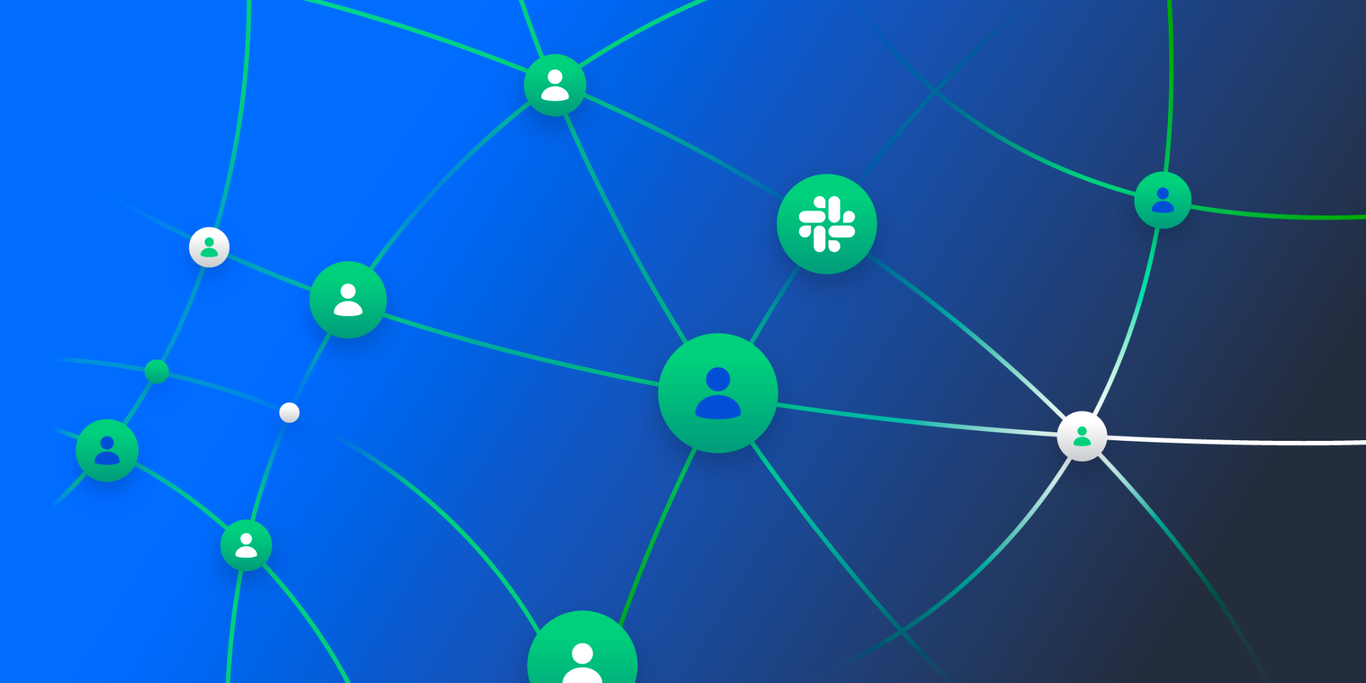How to Keep Your Slack Workspace Ready for Connection
Managing a Slack workspace successfully takes dedication, vigilance, and a little creativity. Use these tips to help your online community thrive.
Managing a Slack workspace successfully takes dedication, vigilance, and a little creativity. Use these tips to help your online community thrive.
00:00
00:00
SPEED
In the age of the remote workforce, the ability to stay connected and foster community is essential. Slack is an incredible tool for this, offering an efficient platform for communication in a bespoke environment.
At Toptal, we use the platform not only to link our distributed core team of more than 1,500 professionals, but also to build a strong, connected network of freelance talent across the globe. We use separate Slack workspaces for these two communities, allowing us to define specific settings unique to how we communicate within them.
In my role as Director of Community, I lead a team dedicated to owning the online experience of our talent. We know that a Slack workspace is constantly growing and changing shape, so managing it successfully takes dedication, vigilance, and a little creativity. In this post, I share how we continually audit and elevate our Slack community workspace so that other businesses and teams can replicate our success and strengthen the power of their online communities.
Four Steps to Helping Your Slack Community Thrive
When an online community is thriving, it helps to build a sense of group identity among members, as well as strengthen their personal and professional connections to the organization. It can also drive and impact company and community team objectives and key results. To achieve all of this, your platform needs to be easy to use and should reflect your brand identity and professionalism.
If Slack forms the basis for communication for your community, you may have already found that without regular monitoring and cleaning, the platform can become messy or unruly. Implementing the following tips and guidance will help you keep your workspace tidy and poised for positive connection:
1. Audit and Clean Up Public Channels
To maintain order and facilitate a smooth user experience, conduct audits on an ongoing basis. Establish rules that you use for every audit. For example: Archive all public channels that were established at least three months ago but have fewer than five messages posted. You’ll also want to decide whether there are channels that should remain active regardless of their levels of activity or inactivity.
For each audit, first export public channel metrics from your platform. In Slack, log in as an administrator and download metrics for your preferred time frame. Sort by key data columns such as “last active” or “messages posted.” Use this data to conduct the audit according to the rules you set. There is the option to auto-archive channels that have been inactive for a select period of time using Slack APIs. However, we have found automatic settings aren’t always useful. Organizations may need to maintain some necessary channels that do not garner frequent engagement.
Aim to perform an audit at least twice per year (ideally, every six months). It can be a time-consuming exercise, but if too much time elapses without an audit, your Slack workspace can become cluttered.
2. Create Naming Conventions and Workspace Standards
If you are in the process of creating a workspace, it is crucial to establish naming conventions and other standards. If your workspace is up and running but you don’t yet have protocols in place, make decisions and update channels accordingly. These changes may cause some confusion but, if implemented correctly, will result in a much smoother user experience in the longer term. I recommend these five approaches:
- Use a prefix or word to describe the department, group, or type of channel, and use a hyphen as a delimiter between words. For example, support channels named #payment_help, #profile-support-team, and #helpdesk become easier to search and find when named #support-payments, #support-profiles, and #support.
- Consider starting key channels with an underscore or hyphen in order to ensure they show up at the top of channel lists when sorted alphabetically (typically the default setting). At Toptal, this approach reduced the volume of messages in the main #_support channel, as members were able to find more relevant channels and get the appropriate support faster.
- Update your workspace settings to ensure that only trained administrators who know the conventions can open public channels. This will limit the amount of channels to be audited.
- Assign clear channel owners or moderators to all main channels. These could be core team members who own select programs or very active users who want to contribute. Assigning owners or moderators will help keep channels active and ensure timely responses where most needed. Add these names to channel descriptions to clarify who members can approach or tag for help.
- Add helpful bookmarks and pins to as many channels as possible to provide specific instructions on how to interact and participate.

3. Empower Members and Channel Moderators With Clear Guidelines
A vital part of community-building is setting clear boundaries and expectations for members. A code of conduct for users can help accomplish this. At Toptal, our talent network comprises diverse people from all over the world with different cultures and backgrounds. Our code of conduct gives users the confidence to be active members of the community and helps everyone thrive.
I also recommend creating two other documents. First, an internal log, to track decisions made around settings, naming conventions, permissions, and more (this should also include a plan for dealing with difficult situations or members so that your team can act fast and maintain a positive environment). Second, a moderator guide, distributed to anyone who monitors or owns channels, to capture best practices around things like welcoming newcomers and, importantly, how to increase activity and engagement in their channels. We provide our moderators with weekly data on their Slack channels, too, so they can track performance.
4. Apply Channel Engagement and Newcomer Outreach Best Practices
There’s so much potential for engaging users, existing and new. These are the core best practices we employ:
- Facilitate a discussion in channels where little activity occurs, and when members post, ensure a team member always responds. When members feel seen, they will be more likely to post more frequently.
- Find ways to engage all members. This helps newcomers feel supported and older members feel relevant and helpful—and encourages them to stay engaged. Ask yourself: Do people feel like it matters if they respond to posts?
- Use “mentions” in Slack to welcome every new member to your channel by name. I recommend drafting a short welcome message that includes instructions on how to contribute to the channel. Use that message for each new member as they’re added, ensuring that you tag them. If you have limited team capacity for personalized posts, use Slack workflows to automate messages to all members who join a channel or exhibit select behaviors.
- Post regularly—at least once a week—to make others feel more comfortable posting. Lead by example and be as active as possible so users know it’s OK to ask questions, comment, and share ideas.
- Format messages for clarity, particularly when they are more than a few lines long. Bold important words or callouts, use italics, and apply inline code or block code to make sections stand out. Users will engage more when information is easier to digest and they can pick out key points quickly. If you really want to become a pro, use Block Kit for posts with buttons.
- Avoid using attachments when text will suffice. If attachments are necessary, try to limit their number. Slack is more of a communication tool than a file-sharing tool, and reducing attachments keeps channel feeds and conversations clean.
Track Workspace Performance and Community Health
At Toptal, we perform an audit of our Slack community every six months, removing dormant channels, implementing new naming conventions, and creating best practices for welcoming and engaging talent. These efforts have tangible results: After our first audit, we saw a 19% increase in active Slack users in a single quarter, i.e., users who posted more than six messages or reactions in the workspace within a 30-day period. When users were able to use the platform better, we saw more engagement.
Slack provides many opportunities to track and monitor the performance of your workspace via its analytics tools. Review these metrics regularly to help you track improvements in engagement.
Outside of metrics, consider these topics and questions to help you determine if your community is healthy:
Shared Values
Are core values clearly articulated to the community, and are these values shared by all its members? Are these values reinforced in your communication?
Membership Identity and Insider Understanding
Do members feel seen and understood? Do members feel comfortable within the community and know the actions you want them to take?
Mutual Contribution and Collaboration
Is the business contributing to the community, and are members contributing to the business and to each other?
Valuable Experiences
Does your platform offer true engaging discussion, facilitate emotional connection, and serve real needs rather than encouraging engagement for engagement’s sake?
Continuous Improvement Enables Connection
In order to create a successful Slack community, administrators and moderators must make it a space where members feel confident and inspired to share. By auditing and cleaning regularly, creating standards, offering clear moderator guidelines, and applying engagement best practices, you can keep the environment optimized for connection. Implement these Slack community management guidelines and tips to transform your workspace from a software tool into a thriving community.
World-class articles, delivered weekly.
Understanding the Basics
Why is an online community important?
An online community is important in building meaningful relationships between distributed individuals. It creates a sense of group identity, as well as strengthening members’ connection to the organization.How do you engage a Slack community?
Engage your Slack community using best practices such as facilitating discussions in quieter channels, posting regularly, using mentions to welcome every new member, formatting messages, and avoiding attachments.Can Slack be audited?
Yes, absolutely. Set rules you can use for each audit, and refer to your Slack metrics when choosing which channels to archive. Ideally, you should conduct audits every six months.




